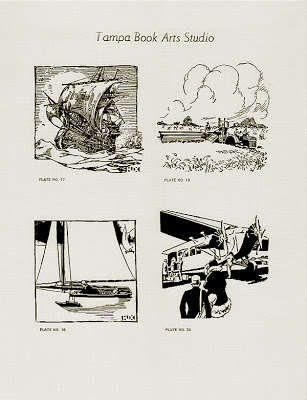 |
| TBAS Director Richard Mathews and Letterpress Coordinator Carl Mario Nudi stand with the newly unwrapped machine still anchored to the pallet. |
 |
| Tampa Press Publishing Assistant Joshua Steward and printer, typecaster Ian Schaefer wrap the caster with pallet wrap. |
Carl and Josh used 2x6-inch lumber to construct a custom pallet that fit around the narrow base of the caster, giving it a wider footprint for stability during transport. Steel eyebolts were driven into the boards, and ratchet tie-down straps and heavy cord were threaded through the base and back through the machine to anchor it to the base. The caster was then covered with a blanket, wrapped in heavy tarps, and sealed with layers of pallet-wrap to weatherize it for travel and storage on its journey south.
 |
| Shaking hands over the fully-wrapped caster, now ready to be shipped. |
 Accompanying the machine was a curious but necessary supporting cast of many replacement parts, molds, and matrices that had to be sorted, cleaned, cataloged, and stored. Carl undertook this task and made a place in the studio for each piece and part. Once this was done and the parts cleared away, the unwrapping of the machine could begin, one layer at a time.
Accompanying the machine was a curious but necessary supporting cast of many replacement parts, molds, and matrices that had to be sorted, cleaned, cataloged, and stored. Carl undertook this task and made a place in the studio for each piece and part. Once this was done and the parts cleared away, the unwrapping of the machine could begin, one layer at a time.
Left: TBAS Director Richard Mathews begins cutting through the many layers of pallet wrap.
Right: Letterpress Coordinator Carl Mario Nudi releases the cords anchoring and protecting the machine.
Right: Letterpress Coordinator Carl Mario Nudi releases the cords anchoring and protecting the machine.
Once this was done, the Monotype Composition Caster was coaxed into its permanent place in the Studio and lowered to the floor:
– Thanks to Ian Schaefer and Dave Seat –
For their hard work, diligence, and for the knowledge they’ve been so willing to share.



































.jpg)




